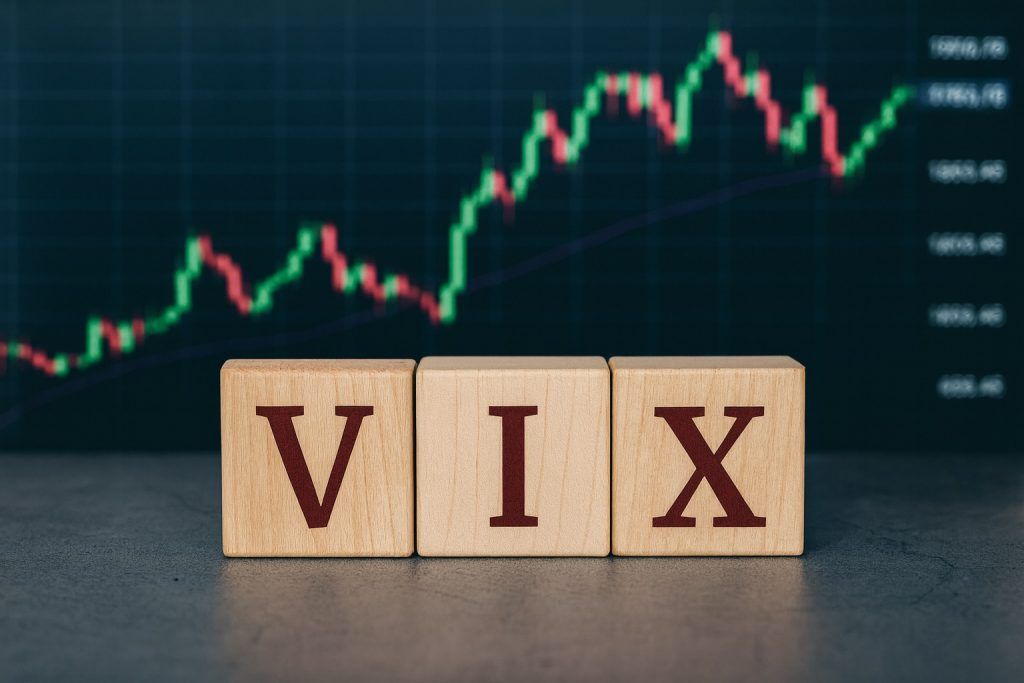- Bitcoin’s slide deepens: The world’s largest cryptocurrency fell under the $107,000 mark, extending its pullback as traders fled risk amid macroeconomic uncertainty [1] [2]. The drop comes after a brief rebound earlier in the week fizzled out, with Bitcoin now retesting support levels from last week’s crash.
- Altcoins slammed: Major tokens like Ether, BNB, and Solana have given up most of their recent gains (each down ~5–7%), while Dogecoin and Cardano’s ADA have plunged over 20% week-to-date [3] [4]. A lack of speculative fervor has sent traders rotating into stablecoins and Bitcoin, leaving smaller altcoins under heavy pressure.
- “Deleveraging” not panic: Analysts say the downturn looks like a controlled unwinding of leverage rather than a panic-driven crash. Exchange open interest has sunk to mid-year lows and ETF inflows remain steady, suggesting long-term investors are staying put [5]. “Nothing structural has really changed” in Bitcoin’s outlook, one analyst noted, characterizing the dip as a healthy reset after last week’s macro shock [6] [7].
- ETF outflows hit record: U.S.-listed crypto funds saw $536 million in net outflows on Thursday – the largest daily redemption since August – reflecting a cautious shift in sentiment after a record-breaking run of inflows [8] [9]. BlackRock’s and Fidelity’s spot Bitcoin ETFs alone shed over $160M combined [10], even as Citi analysts reiterated Bitcoin’s growing correlation with equity market swings.
- Macro drivers loom: Investors are now bracing for major catalysts. The Federal Reserve’s late-October meeting could bring a rate cut (markets put odds around 65% [11]), potentially reviving risk appetite. Meanwhile, global safe-haven bids are up – gold hit a record high this week [12] – amid ongoing U.S.–China trade war jitters. Some prominent crypto figures, like ex-BitMEX CEO Arthur Hayes, even call the current drawdown a “buying window” ahead of a possible year-end rebound [13].
Bitcoin Drops Under $107K Amid Renewed Risk-Off Mood
Bitcoin’s price slid below $107,000 during Friday’s Asian trading session, marking a new phase of cautious sentiment across crypto markets [14]. The tone in broader risk assets has soured in recent days, as investors rotate funds into safer havens (like stablecoins and gold) and away from volatile tokens ahead of looming macroeconomic catalysts [15] [16]. After staging a modest relief bounce on Sunday and Monday, Bitcoin’s recovery quickly fizzled – and the market is once again drifting lower, erasing most of the gains made after last week’s liquidation shock [17]. Indeed, as one strategist noted earlier this week, “the lack of new catalysts” had been stalling crypto’s momentum [18], leaving the door open for bears to reassert themselves absent fresh bullish drivers.
This downturn comes on the heels of a sharp shock in the prior week that temporarily upended crypto’s “Uptober” rally. On Oct. 10, U.S.–China trade tensions suddenly flared after President Donald Trump announced 100% tariffs on Chinese goods – a surprise escalation that sparked a market-wide sell-off [19]. Bitcoin, which had been trading near $117,000 earlier that day, plunged almost 10% within hours, hitting lows around $104K–108K [20]. Over $19 billion in leveraged crypto positions were forcibly liquidated during the rout, one of the largest such events on record [21]. Altcoins fared even worse: Ether and XRP each cratered 15–30% at the depths of the panic, and the total crypto market cap shed roughly $400 billion in a day. While Bitcoin did rebound to about $112K in the days following the crash [22], the latest slide has it testing those support levels again.
Ironically, last week’s turmoil was a stark reversal from early October’s optimism. Bitcoin had surged to a new all-time high (~$126,000 on Oct. 5) amid what analysts dubbed “Uptober” – fueled by massive ETF inflows and even safe-haven buying. As U.S. fiscal and economic fears grew (a government shutdown began Oct. 1), investors flocked to Bitcoin alongside gold, bolstering its narrative as “digital gold” [23]. That positive backdrop quickly unraveled with the tariff shock, underlining how fast sentiment can flip in crypto. Traditional markets were not spared either: the S&P 500 index sank about 2%, and the tech-heavy Nasdaq fell 2.7% during the initial sell-off, while crypto-exposed stocks like Coinbase, MicroStrategy and others slid 3–12% in sympathy [24]. The episode underscored the deep influence global politics now wield over both Wall Street and the crypto sphere [25]. As one market strategist put it, the rout was “sparked by US–China tariff fears but fueled by institutional over‑leverage,” illustrating the interplay between macro news and crypto’s internal froth [26].
Altcoins Extend Losses as Speculation Ebbs
Beyond Bitcoin, altcoin markets have been hit even harder by the renewed risk aversion. Major layer-1 coins that briefly bounced last week are sliding anew: Ether (ETH) is back under $3,900, while Binance Coin (BNB), Solana (SOL) and XRP are all down between 5–7% in the past 24 hours, giving back most of their post-crash gains [27]. Smaller and more speculative tokens have cratered on vanishing demand – for instance, Dogecoin and Cardano’s ADA are each down over 20% this week as traders retreat from higher-risk plays [28].
Market participants say this exodus from altcoins reflects a broader flight to safety within crypto. “Altcoins are under pressure as liquidity continues to rotate back into Bitcoin and stablecoins amid risk-off sentiment,” explained Wenny C., COO at SynFutures [29]. She noted that with fewer active buyers, thinner order books are amplifying price swings on secondary markets [30]. In other words, many traders have parked funds in cash-like crypto assets (such as USDT or USDC stablecoins) or in Bitcoin itself, rather than speculate on smaller coins – a sign of diminished risk appetite. This dynamic has punished tokens outside the top tier: over the past seven days, several once-buzzing altcoins – from meme coins to DeFi tokens – have sunk by double-digit percentages, essentially surrendering the “Uptober” rally they enjoyed just weeks ago [31].
The current pattern is reminiscent of previous crypto cooldowns where Bitcoin dominance rises at the expense of altcoins. Even though Bitcoin is down ~3–4% over the week, its relative strength is clear: BTC now accounts for about 56% of total crypto market cap (up from ~50% a month ago) as capital consolidates in the most established asset. “We’re seeing a consolidation into quality,” noted one analyst, “which usually happens when speculative fervor dries up.” Until confidence returns, smaller-cap crypto assets may continue to lag – or at least remain highly volatile – as traders await a clear green light to re-engage in riskier bets.
‘Controlled Deleveraging’ – Not Panic – Say Analysts
Despite the sea of red on price charts, market analysts do not see signs of outright capitulation. Instead, many describe the pullback as a necessary cleansing of excess leverage after the exuberance of early October. Exchange open interest (a measure of outstanding futures positions) has dropped to its lowest levels since mid-2025, indicating that a lot of speculative leverage has been flushed out of the system [32]. At the same time, spot Bitcoin ETF flows – a proxy for institutional and longer-term interest – remain positive on net, suggesting that long-term holders are largely standing firm [33]. This combination points to what traders call a “controlled deleveraging” rather than a panic-driven sell-off. “This latest dip reflects declining speculative appetite after last week’s macro data,” said SynFutures’ Wenny C., adding that “nothing structural has really changed” for Bitcoin’s investment thesis [34]. In her view, the market is essentially cooling off and consolidating after a period of over-exuberance, not entering a fundamental downtrend.
Other experts echo that sentiment. Nassar Achkar, chief strategy officer at exchange CoinW, noted that big leverage flushes like the one triggered last week often “set up cleaner bases” for crypto markets going forward [35]. With many weak hands and overextended traders now forced out, “resilient ETF inflows and whale accumulation are stabilizing markets,” Achkar observed, referring to continued buying by large holders [36]. The path to a sustained rebound, he says, “will depend on how quickly this underlying capital converts into fresh risk-taking” [37] – in short, whether institutions and long-term bulls feel confident enough to start deploying capital aggressively again. For now, open interest and volatility metrics suggest the market has reset to a more neutral stance: exchange funding rates flipped negative during the crash (indicating traders were unwinding long positions), and total futures OI is down markedly, which reduces the risk of another cascade of liquidations in the immediate term.
On-chain data backs up the idea of a healthy reset. Analytics firm Glassnode, in its latest Week On-Chain report, described the recent sell-off as a “necessary reset” following one of the largest futures deleveraging events in crypto history [38]. An estimated $19+ billion in futures contracts were wiped out in the Oct. 10–11 purge, and volatility spiked to its highest levels of the year. Now, in the aftermath, Glassnode notes the market is in a “reset phase, characterized by flushed leverage, cautious sentiment, and recovery hinging on renewed demand” [39]. In this phase, many short-term speculators have already capitulated – as evidenced by a spike in realized losses on-chain and a dip in the proportion of supply held by recent buyers. Long-term holders, however, continue to hold ~70% of Bitcoin’s supply (with some even adding to positions), and 94–95% of all BTC is still sitting at an unrealized profit despite the pullback [40]. Such figures imply that few investors are underwater or forced to sell at these prices, potentially limiting further downside. As Glassnode summarizes, leverage has been purged and market sentiment is cautious but not broken – a foundation from which a more durable uptrend could eventually rebuild “hinging on renewed demand”.
Fed Signals, Trade Jitters and Safe Havens
Looking ahead, macro factors loom large in determining whether crypto’s current slump is a temporary pit stop or the start of a longer downturn. Front and center is the U.S. Federal Reserve. The Fed’s next policy meeting (ending Nov. 1) is highly anticipated, as traders hope for signs of easier monetary policy to counter the economic headwinds. Futures pricing now implies a 65% chance of a 25 basis-point rate cut at that meeting [41] – a notable shift, given that the Fed hasn’t cut rates in over a year. Fed Chair Jerome Powell fueled speculation last week by hinting that the central bank could soon pause or end its quantitative tightening program (ongoing balance sheet reductions) [42]. Any dovish surprise – like an actual rate cut or even strongly accommodative language – could improve risk sentiment into year-end. “If the Fed even opens the door to loosening, that’s a big deal for Bitcoin,” said one crypto macro analyst, explaining that lower rates and a slower QT pace would ease liquidity conditions that have been tightening financial markets. On the flip side, a hawkish Fed (e.g. no cut and firm rhetoric about inflation risks) could disappoint investors and keep the risk-off mood intact.
Beyond the Fed, geopolitical and economic jitters continue to drive short-term market moves. The renewed trade war tensions between the U.S. and China are a prime example: after Trump’s tariff salvo, Beijing hinted at possible retaliatory measures, and traders worldwide have been on edge. Traditional safe havens have reacted accordingly – gold prices spiked to all-time highs (briefly trading above $4,000/oz) this week amid the uncertainty [43] [44], and the Japanese yen strengthened sharply on haven flows following the tariff news [45]. Global stock markets have felt the strain too: Asian equities sunk to their lowest levels in two weeks [46], and volatility indices have ticked up. In the crypto space, this has translated into heightened correlations with macro trends. Citi analysts noted that Bitcoin is exhibiting “growing equity sensitivity”, often sliding when stock indices fall [47]. That link was evident in the past week: futures tied to the S&P 500 turned red on growth fears, and Bitcoin followed suit [48] [49]. The big question is whether these macro clouds will begin to part or if they intensify as we head into year-end.
Crucially, some veteran crypto investors see opportunity in the turmoil. Former BitMEX CEO Arthur Hayes argued that the latest drawdown is a “buying window” for Bitcoin [50] – essentially, a chance to accumulate at a relative discount before the next leg higher. His thesis is that central banks will inevitably tilt dovish (under pressure from slowing economies or market stress), which could ignite a powerful rally in Bitcoin much like past liquidity-driven surges. Similarly, analysts at K33 Research pointed out that with leverage largely cleared out, there is now “room for spot BTC positions to rebuild” once confidence returns [51]. In their view, cash buyers (rather than leveraged traders) may soon step in to fill the void, especially if macro conditions stabilize or improve. This optimistic take doesn’t guarantee an immediate rebound – but it highlights a scenario where, if worst-case outcomes (like an escalating trade war or a hawkish Fed) are avoided, crypto could regain its footing relatively quickly. For now, traders are in a wait-and-see mode, scanning headlines for any hint of easing tensions or economic support that might flick the switch back to “risk-on.” Until then, caution reigns.
Outlook: Key Levels, “Reset” Bottom or More Volatility?
With Bitcoin hovering in the mid-$100Ks, analysts are eyeing a few critical price levels that could define the market’s next moves. On the downside, the $105,000–108,000 zone has emerged as an important support band. This range corresponds to the 0.85–0.95 quantile of Bitcoin’s recent price distribution – essentially the lower end of its recent trading envelope [52]. Glassnode warns that a sustained drop below ~$108K would be a “critical warning signal” of structural weakness, potentially opening the door to a deeper correction [53]. Other analysts note that roughly $105K was a notable support in early September and again during the Oct. 11 recovery; veteran trader Peter Brandt has pegged ~$105K as the line that must hold to prevent a larger bearish trend shift [54]. If that floor were to fail, technical charts suggest the next major support might sit in the low-$100Ks – around $102K–$103K – which is where buyers stepped in during the worst of last week’s plunge [55]. In short, dipping into five-figure territory again (below $100K) would likely spook markets and signal that the post-shock consolidation has broken down.
On the upside, bulls say Bitcoin needs to reclaim the ~$120K+ zone to flip the narrative back to positive. The 50-day moving average (currently near $113K) capped this week’s rebound attempt [56], but a bigger hurdle lies around $124K–$126K, which was the prior all-time high range from early October. “Bitcoin needs to break back above ~$124K to resume its uptrend,” as one analysis noted [57]. Climbing above that level would confirm that the recent drop was just a temporary pullback within a larger bull market. Until then, the trend strength remains in question. Alex Kuptsikevich, chief analyst at FxPro, observes that three-month support around current prices has held multiple times, but warns that bears’ persistence “suggests that the next stage will be a test of the 200-day average” for the total crypto market (around a $3.5 trillion market cap) [58]. Notably, when the market touched that 200-day trendline in late July, it triggered strong buying and a subsequent rally [59] – so bulls may be counting on history to rhyme if another retest occurs in the coming days.
In terms of bigger-picture forecasts, institutions and crypto veterans are divided but generally optimistic beyond the immediate volatility. Citigroup this week reiterated its year-end 2025 target of about $133,000 for Bitcoin [60], citing the asset’s resilience and growing mainstream adoption. Standard Chartered — which earlier predicted a ~$100K price by end-2024 — now even sees the potential for $200,000 by late 2025 if current trends resume [61]. Other Wall Street firms like JPMorgan have floated six-figure “fair value” estimates (JPM’s model points to ~$165K in the long run, assuming Bitcoin continues to behave like “digital gold”) [62]. Such bullish outlooks assume that the recent turmoil is a temporary setback and that Bitcoin’s trajectory remains pointed upward thanks to factors like ETF-driven institutional buying, diminishing supply (next year’s halving), and a favorable macro shift (rate cuts, lower inflation) [63]. On the flip side, some analysts urge caution about getting too exuberant. A recent Elliott Wave analysis projected $135K–$140K as a cycle top by late 2025, to be followed by a multi-month decline in 2026 [64]. Even Citi’s research team sketched a bearish scenario where if a recession hits and drags down equities, Bitcoin could dip to the $80K range by the end of 2025 [65]. And high-profile skeptics (like author Robert Kiyosaki) continue to warn of the possibility of a 50% crash in asset prices if broader markets unravel [66] – though notably, Kiyosaki still advocates holding Bitcoin for the long term as a hedge [67].
For now, all eyes are on the market’s “reset”: has the crypto shakeout run its course, establishing a durable bottom around ~$105K–110K? Or will the absence of immediate bullish catalysts lead to further choppiness (or even another leg down) before the next rally can take hold? Encouragingly, the crypto Fear & Greed Index – which plunged from “Greed” (64) to “Fear” (27) during the tariff-induced crash – has stabilized and ticked up slightly, indicating sentiment is no longer in freefall [68]. Many on-chain indicators are flashing oversold or neutral rather than overheated, and BTC’s supply/demand fundamentals (from long-term holder accumulation to mining costs) remain robust. As November approaches, the stage is set for a potential turnaround if macro conditions cooperate. Should the Fed deliver a dovish surprise or trade tensions cool, Bitcoin could find itself on stronger footing to resume its climb. Conversely, absent a new spark, crypto investors may need to buckle up for an extended period of sideways trading and heightened volatility – a test of patience and conviction following the fireworks of the past month. Either way, the next few weeks will be pivotal in determining whether this October reset was merely a hiccup on the road to new highs, or a sign that the crypto market’s momentum has truly paused as 2025 winds down.
Sources: CNBC/Crypto World [69] [70]; CoinDesk [71] [72]; TS² (TechStock²) [73] [74]; Glassnode [75]; Reuters; iGamingAfrika [76]; and others.
References
1. www.coindesk.com, 2. www.coindesk.com, 3. www.coindesk.com, 4. www.coindesk.com, 5. www.coindesk.com, 6. www.coindesk.com, 7. www.coindesk.com, 8. www.coindesk.com, 9. www.coindesk.com, 10. www.coindesk.com, 11. www.coindesk.com, 12. www.coindesk.com, 13. www.coindesk.com, 14. www.coindesk.com, 15. www.coindesk.com, 16. www.coindesk.com, 17. www.coindesk.com, 18. ts2.tech, 19. igamingafrika.com, 20. igamingafrika.com, 21. ts2.tech, 22. igamingafrika.com, 23. ts2.tech, 24. igamingafrika.com, 25. igamingafrika.com, 26. ts2.tech, 27. www.coindesk.com, 28. www.coindesk.com, 29. www.coindesk.com, 30. www.coindesk.com, 31. www.coindesk.com, 32. www.coindesk.com, 33. www.coindesk.com, 34. www.coindesk.com, 35. www.coindesk.com, 36. www.coindesk.com, 37. www.coindesk.com, 38. www.coindesk.com, 39. insights.glassnode.com, 40. ts2.tech, 41. www.coindesk.com, 42. www.coindesk.com, 43. ts2.tech, 44. www.coindesk.com, 45. www.coindesk.com, 46. www.coindesk.com, 47. www.coindesk.com, 48. www.coindesk.com, 49. www.coindesk.com, 50. www.coindesk.com, 51. www.coindesk.com, 52. insights.glassnode.com, 53. insights.glassnode.com, 54. ts2.tech, 55. igamingafrika.com, 56. www.coindesk.com, 57. ts2.tech, 58. www.coindesk.com, 59. www.coindesk.com, 60. www.coindesk.com, 61. ts2.tech, 62. ts2.tech, 63. ts2.tech, 64. ts2.tech, 65. ts2.tech, 66. ts2.tech, 67. ts2.tech, 68. ts2.tech, 69. igamingafrika.com, 70. igamingafrika.com, 71. www.coindesk.com, 72. www.coindesk.com, 73. ts2.tech, 74. insights.glassnode.com, 75. insights.glassnode.com, 76. igamingafrika.com







